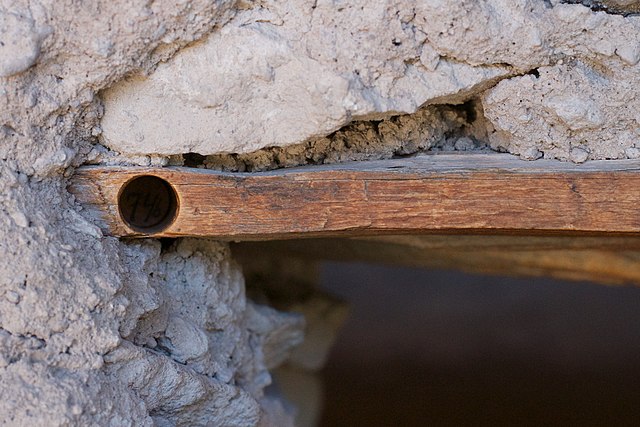Any historian worth their degree knows that we will never be able to recreate an absolutely perfect picture of past events. This principle only grows more true the further back we go, and it is the burden of archaeologists in particular to analyze their findings with more doubt than surety. It is unfortunately the nature of physical evidence that very few sites contain absolute confirmation of their own chronology, and in the absence of such evidence, the field of archaeology has established certain methods for estimating the date of material culture based on factors such as stratigraphy (the relative position of artifacts at a single site, with deeper deposits generally considered to be older) and using artifact typologies that can be confidently tied to absolute chronologies at other sites. All these are only substitutes, however, a form of reasonable speculation when more direct, confident methods of dating are impossible. Luckily, the past few decades have seen the development of such scientific techniques as dendrochronology and radiocarbon analysis which offer the potential to be much more precise in how we date archeological sites. One would think that these new methods would be greeted with great relief and applause, yet I am constantly surprised at how often this is not the case. As with any discipline, archaeology appears to have its own stubborn, hidebound individuals who can’t seem to give up on their favorite outdated methods.
I first discovered the rancorous debate between scientific and relative dating in sophomore year of undergrad. I had long been fascinated with the Minoan town of Akrotiri, buried as a result of the Bronze Age eruption of its home island of Thera, and so when we had to choose an archaeological site to focus on for my Mycenaean Greece seminar, my choice was obvious. As I delved into the historiography of excavations on Thera, I discovered that there is a heated debate over the actual date of Akrotiri’s burial. This ancient eruption of Thera may have been the most violent such event of the Holocene, throwing six times more volcanic ejecta into the atmosphere than Krakatoa’s eruption in 1883, and the site’s original excavator theorized it may even have contributed to the collapse of Minoan civilization. Pottery styles found in the ruins eventually cast heavy doubt on this hypothesis, but also provided insight into chronology due to the presence of a certain type of Egyptian pottery tied to the late 1500s BC. Decades later, however, the carbon dating of dozens of samples found in the destruction layer of Akrotiri yielded a range of years in the mid seventeenth century BC, over a century earlier, for the town’s destruction. Case closed, right?
Wrong. Rather than conceding the point to scientific analysis, the adherents of relative dating methods dug in their heels and doubled down that their late sixteenth century date for the Theran eruption is the correct one. I must admit, this led to some of the most entertaining conference papers I’ve ever read, with passive aggressive sarcasm and cattiness oozing off the page; I wish I had been there to see these middle aged academics behaving like the Real Housewives! I was reminded of this whole controversy recently while reading Neil Price’s terrific history of the Vikings, Children of Ash and Elm. After describing the mound burial of a Nordic lord (possibly a kind, by the ‘king’ chess piece in his mouth) and his retinue on the island of Salme in the Baltic Sea off the coast of Estonia, Price then mentions that both the Icelandic Ynglingasaga and an earlier Latin text state that a King Yngvar led a disastrous raid in Estonia that resulted in their massacre and burial–on that very same island! I usually criticize authors for not being circumspect enough, but here Price almost offhandedly remarks that Yngvar’s death is usually dated to a century prior to these burials on Salme, but “one wonders, nonetheless.”
One more than wonders, I should think! I am usually the first to advocate for responsible speculation, especially when it comes to matching physical evidence to events related in mythical traditions. Yet with these two subjects, it seems to me that far too much skepticism has entered the equation. Yes, carbon dating and other scientific processes are not without their own complications and caveats of interpretation, but to claim that a system based on our own necessary adaptation of incomplete, opaque evidence unearthed from only what sites we’ve discovered or been able to excavate is, to be frank, absurd. So that kind of Egyptian pottery is unknown before the late fifteenth century in Egypt? I can think of a dozen reasons why not that don’t include “It didn’t exist.” Similarly, we’ve found a likely royal burial on a small island in the Baltic that matches the details of multiple accounts’ descriptions, yet our own chronology of the period says it’s a century too late to be that king? Maybe our chronology needs revisiting. It is for exactly these reasons that revision remains essential for all academic disciplines, history more than most. If we have recreated these narratives from imperfect sources, we should not only be open to revising them when new or better information presents itself, but overjoyed that we get the opportunity. We will still never reach that perfect, completely accurate picture of the past, but the only way we can get closer is to not be too attached to the imperfect methods we ourselves have come up with.
